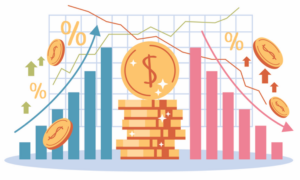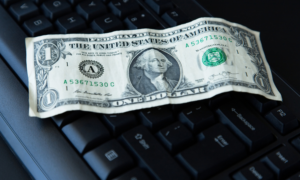 What I learned as a dividend investor
What I learned as a dividend investor
Carl Anderson, 79
Retired school principal; Toronto
Years ago my father invested in what I call ‘moose pasture stocks’—companies that go out in Northern Ontario and stake a claim in the pasture because of rumours that there’s gold nearby—but there really isn’t anything there. Their investments always seemed to be losing money, and I decided there must be a better way. So I made up an imaginary portfolio to practice with and I eventually discovered dividend stocks. Now I have a real portfolio that’s worth $2.3 million.
The trick for me was to find a reliable source of stock-picking information. Quite a few years ago I discovered the Investment Reporter newsletter, which has a ton of useful information on what to buy, and how to do it right. My portfolio currently contains about 200 stocks. Virtually all of them pay dividends, and most have a long history of increasing their dividends.
If you’re getting into dividend investing and you don’t need the income right away, you should use a Dividend Re-Investing Plan, or DRIP, which automatically reinvests your dividends for you. Some companies actually sell you their stock at a lower price if you use one. A DRIP is especially good in an RRSP.
I’ve been overjoyed with my results from dividend investing so far. In fact, we’ve done so well, we can’t spend it all—so when we’re gone, all of our money is going to be left to children’s charities.
…..
Kevin O’Leary, CBC entertainer and token arch-capitalist, is very fond of dividends. He thunders on about them like a robber baron of yore. But he also happens to be right. Stocks that pay generous dividends have been very good performers, and that comes as no surprise to clever widows and the odd orphan, who’ve been on the dividend bandwagon for decades.
Why does dividend investing work? Dividends are at the core of stock investing because there are only a very few ways for shareholders, as a whole, to profit from the companies they own. A firm can pay cash, usually as a nice quarterly dividend payment, or it can sell off assets and pay a special dividend. The firm ends its life by being bought or simply being liquidated. Without dividends, or the keen expectation of future dividends, owning a stock would be little more than rank speculation.
With dividends representing a central source of returns, it should come as no surprise that, in aggregate, a large fraction of the market’s total return has come from dividends. From 1975 to 2009 the MSCI World Index (a measure of the performance of stocks around the world) provided an average total return, adjusted for inflation, of 6.9% per year. Of that total, dividends accounted for 2.9 percentage points, and capital gains 4.0 percentage points. In other words, dividends were nearly as important to overall returns as price gains.
How do dividend stocks perform? Take a look at the Dollars from dividends graph to the right which shows the performance of two U.S. stock portfolios. From 1980 through to the start of 2010, if you had simply invested in the whole market, as represented by the S&P 500, each dollar would have grown to almost $25—for an 11.2% a year return on average. (For simplicity’s sake these returns neglect fees, taxes, and inflation.)
However, if you invested in a portfolio of stocks with the highest 30% of dividend yields, as shown by the line in orange, you would have soundly trounced the market with average annual gains of 13.0%. That’s a 1.8-percentage-point annual advantage for high-yielding stocks versus the market. (The dividend portfolio was put together by Kenneth French, professor of finance at Dartmouth College, and he rebalanced it on an annual basis.)
Don’t get too greedy. Before loading up willy-nilly on stocks that pay high yields, it’s important to take a step back and take note of an important detail: stocks with extremely high-dividend yields have not fared well.
That’s because these super-high yields are often more the result of falling stock prices than of rising dividends. If a stock is crashing, but the dividend hasn’t been cut (yet), the dividend suddenly represents a much higher percentage of the price, even though the dividend itself is not increasing. As a result, a very high yield can be a danger sign, and such stocks have a nasty habit of reducing or eliminating their dividends altogether. In practical terms, that means you should focus on stocks with yields that are well above average, say in the top 30% of yields, but not in the sky-high top 10% group. As a safety factor, conservative investors should also stick with stocks in a large blue-chip index such as the S&P/TSX60.
Some stocks to get you going. The Dividend darlings table above highlights 12 stocks that fit both of the above criteria: the yields are high—but not too high—and all of them are large blue-chip companies. Banks and financial institutions dominate the list, and a variety of utilities are also well represented. As a result, our list is overly concentrated in only a few industry groups, which is a risk factor. That’s why investors often like to supplement their dividend portfolios with foreign stocks for better diversification.
It is wise to take a long-term approach when investing in dividend stocks because most can be held for years, provided they don’t become significantly overvalued. You can take your time and slowly build up a portfolio of 20 or more dividend payers that, with luck, will fund your retirement.
What can go wrong? The 1980 to 2010 period graphed above was particularly good to investors. Regrettably, stocks are currently pricier than they were in 1980 and returns over the next decade are likely to be somewhat less than those of the last 30 years.
You should also be aware that dividend stocks can fall out of favour. From time to time, the market is drawn to the next hot thing, such as Internet stocks in the late 1990s. In such times you’ll be tempted to give up on stodgy dividend stocks. And then there’s the risk of panicking and selling after a market crash. Many lack the fortitude to stay put as their portfolio drops by 40%.
As always, our dividend stock suggestions represent just the starting point. Dig deeper before investing. Read the firms’ annual reports and press releases. Do your own due diligence. After all, no one cares more about your money than you do.
Dividend darlings
These 12 stocks offer yield in the top 30%, and they are all large blue-chip companies. The make up a great core for a dividend portfolio, but you should round it out with stocks from other sectors.
| Name |
Industry |
Price |
Yield |
| TransAlta (TA) |
Electric Utility |
$21.27 |
5.46% |
| Sun Life Financial (SLF) |
Insurance |
$28.81 |
5.00% |
| CIBC (CM) |
Bank |
$70.75 |
4.92% |
| Telus (T) |
Telecom |
$40.91 |
4.89% |
| Husky Energy (HSE) |
Oil & Gas |
$25.70 |
4.67% |
| Bank of Montreal (BMO) |
Bank |
$62.62 |
4.47% |
| TransCanada (TRP) |
Gas Utility |
$36.62 |
4.37% |
| Shaw Communications (SJR.B) |
Cable |
$20.30 |
4.33% |
| Power Corp. of Canada (POW) |
Conglomerate |
$26.96 |
4.30% |
| National Bank of Canada (NA) |
Bank |
$59.50 |
4.16% |
| Bank of Nova Scotia (BNS) |
Bank |
$51.44 |
3.81% |
| Fortis (FTS) |
Electric Utility |
$29.41 |
3.81% |
| Source: Globeinvestor.com, August 3, 2010 |
 What I learned as a dividend investor
What I learned as a dividend investor 









